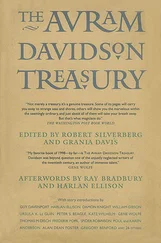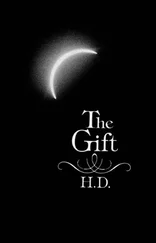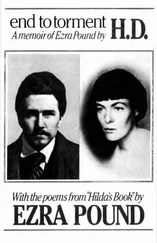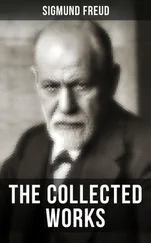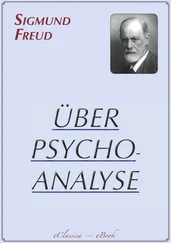There is one line clearly drawn, but before I have actually recovered from this, or have had time to take breath, as it were, another two dots appear and I know that another line will form in the same way. So it does, each line is a little shorter than its predecessor, so at last, there it is, this series of foreshortened lines that make a ladder or give the impression of a ladder set up there on the wall above the wash-stand. It is a ladder of light, but even now I may not take time, as I say, to draw breath. I may be breathing naturally but I have the feeling of holding my breath under water. As if I were searching under water for some priceless treasure, and if I bobbed up to the surface the clue to its whereabouts would be lost forever. So I, though seated upright, am in a sense diving, head-down underwater — in another element, and as I seem now so near to getting the answer or finding the treasure, I feel that my whole life, my whole being, will be blighted forever if I miss this chance. I must not lose grip, I must not lose the end of the picture and so miss the meaning of the whole, so far painfully perceived. I must hold on here or the picture will blur over and the sequence be lost. In a sense, it seems I am drowning; already half-drowned to the ordinary dimensions of space and time, I know that I must drown, as it were, completely in order to come out on the other side of things (like Alice with her looking-glass or Perseus with his mirror). I must drown completely and come out on the other side, or rise to the surface after the third time down, not dead to this life but with a new set of values, my treasure dredged from the depth. I must be born again or break utterly.
These lines seem to take such a long time to form separately. Perhaps they are symbolic ages or aeons. Anyhow, I have been able to concentrate, to hold the picture so far. There are maybe seven rungs to this ladder, maybe five; I did not count them. They are symbolic anyway, the ladder itself is a symbol well authenticated; it is Jacob’s ladder if you will; it is a symbol common to all religious myth or lore.
But fortunately the last figure to form does so, quickly; at least, there seems less strain and worry of waiting now. There she is, I call her she; I call her Niké, Victory. She is facing the wall or moving as against the wall up from the last rung of the ladder and she moves or floats swiftly enough. To my right, to her right on the space between the ladder and the mirror-frame above the wash-stand, there is a series of broken curves. Actually, they are above the ladder, not touching the angel who brushes past them. I realize that this decorative detail is in a sense suggested by the scrollwork of the mirror-frame, but as in the case of the tripod (also suggested by, or reminding me of a natural homely object on the stand there), cannot not be a replica of it, a shadow of it, for again the scrollwork is drawn in light and would not anyway match a shadow direction even if shadow could be thrown. The S or half-S faces the angel; that is, the series of the S-pattern opens out in the direction of the angel; they are like question marks without the dot beneath them. I did not know what this scrollwork indicated; I thought at the time that it was a mere wave-like decorative detail. But now I think this inverted S-pattern may have represented a series of question marks, the questions that have been asked through the ages, that the ages will go on asking.
Victory, Niké, as I called her exactly then and there, goes on. She is a common-or-garden angel, like any angel you may find on an Easter or Christmas card. Her back is toward me, she is simply outlined but very clearly outlined like the first three symbols or “cards.” But unlike them, she is not flat or static, she is in space, in unwalled space, not flat against the wall, though she moves upward as against its surface. She is a moving-picture and fortunately she moves swiftly. Not swiftly exactly but with a sure floating that at least gives my mind some rest, as if my mind had now escaped the bars of that ladder, no longer climbing or caged but free and with wings. On she goes. Above her head, to her left in the space left vacant on this black-board (or light-board) or screen, a series of tent-like triangles forms. I say tent-like triangles, for though they are simple triangles they suggest tents to me. I feel that the Niké is about to move into and through the tents, and this she exactly does. So far — so good. But this is enough. I drop my head in my hands; it is aching with this effort of concentration, but I feel that I have seen the picture. I thought, “Niké, Victory,” and even as I thought it, it seemed to me that this Victory was not now, it was another Victory; in which case there would be another war. When that war had completed itself, rung by rung or year by year, I, personally (I felt), would be free, I myself would go on in another, a winged dimension. For the tents, it seemed to me, were not so much the symbolic tents of the past battlefields, the near past or the far past, but tents or shelters to be set up in another future contest. The picture now seemed to be something to do with another war, but even at that there would be Victory. Niké, Victory seemed to be the clue, seemed to be my own especial sign or part of my hieroglyph. We had visited in Athens, only a short time ago, the tiny Temple of Victory that stands on the rock of the Acropolis, to your right as you turn off from the Propylaea. I must hold on to this one word. I thought, “Niké, Victory.” I thought, “Helios, the sun. .” And I shut off, “cut out” before the final picture, before (you might say) the explosion took place.
But though I admit to myself that now I have had enough, maybe just a little too much, Bryher, who has been waiting by me, carries on the “reading” where I left off. Afterwards she told me that she had seen nothing on the wall there, until I dropped my head in my hands. She had been there with me patient, wondering, no doubt deeply concerned and not a little anxious as to the outcome of my state or mood. But as I relaxed, let go, from complete physical and mental exhaustion, she saw what I did not see. It was the last section of the series, or the last concluding symbol — perhaps that “determinative” that is used in the actual hieroglyph, the picture that contains the whole series of pictures in itself or helps clarify or explain them. In any case, it is apparently a clear enough picture or symbol. She said it was a circle like the sun-disk and a figure within the disk; a man, she thought, was reaching out to draw the image of a woman (my Niké) into the sun beside him.
The years between seemed a period of waiting, of marking time. There was a growing feeling of stagnation, of lethargy, clearly evident among many of my own contemporaries. Those who were aware of the trend of political events, on the other hand, were almost too clever, too politically minded, too high-powered intellectually for me altogether. What I seemed to sense and wait for was frowned upon by the first group, though I learned very early not to air my thoughts and fears; they were morbid, they were too self-centered and introspective altogether. Why — my brother-in-law spent such a happy holiday in the Black Forest (with — so-and-so — chapter and verse) and the food was so good — everybody was so hospitable and so very charming. If, on the other hand, I ventured a feeble opinion to the second group, I was given not chapter and verse so much as the whole outpouring of pre-digested voluminous theories. My brain staggers now when I remember the deluge of brilliant talk I was inflicted with; what would happen if, and who would come to power when — but with all their abstract clear-sightedness, this second group seemed as muddled, as lethargic in their own way, as the first. At least, their theories and their accumulated data seemed unrooted, raw. But this, I admit — yes, I know — was partly due to my own hopeless feeling in the face of brilliant statisticians and one-track-minded theories. Where is this taking you, I wanted to shout at both parties. One refused to admit the fact that the flood was coming — the other counted the nails and measured the planks with endless exact mathematical formulas, but didn’t seem to have the very least idea of how to put the Ark together.
Читать дальше

